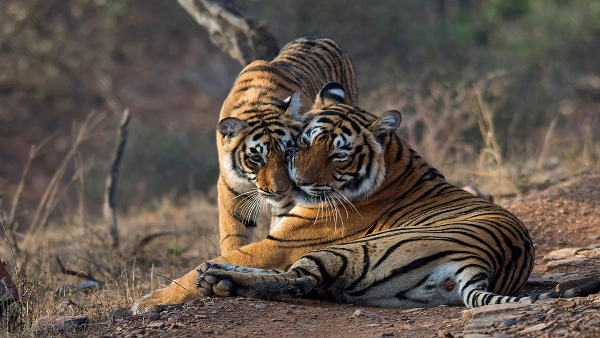NEW DELHI: After years of discussion, the Centre has approved tiger reserve status for the sanctuaries spanning the forests of Meghamalai and Srivilliputhur in Tamil Nadu. The 1 lakh-hectare area, home to 63 mammal species and 323 bird species — will be India’s 51st tiger reserve.
Last Wednesday, the National Tiger Conservation Authority (NTCA) conveyed the approval to the Tamil Nadu government. Referring to a letter from the Tamil Nadu government on January 7 and a technical committee meeting on January 22, the note said the Srivilliputhur and Meghamalai sanctuaries will be notified as tiger reserves. The last tiger reserve was notified six years ago in Arunachal Pradesh, Kamlang.
The Meghamalai Wildlife Sanctuary is spread across the districts of Theni and Madurai (Highwavys mountains and Cardamom Hills) while the Srivilliputhur Grizzled Squirrel Wildlife Sanctuary lies along Kerala’s Periyar Tiger Reserve. The plan has been about seven years in the works — pug marks were spotted, proposals sent but it was DNA analysis that finally sealed the order. Between March 2017 and August 2018, forest officials analysed 118 scat samples and confirmed the presence of at least 14 tigers. “Three of them were found as individual male and (the) rest of the 11 (were) female scats,” the correspondence on approval for the new reserve said.
Large population density of ungulates (mammals with hooves) and other carnivores spotted deers (11.5/square km), Indian gaurs (4.8/square km) and wild boar (8.8/square km) — all of which form prey to a tiger — make Meghmalai region best suited to be declared as a reserve.
Srivilluputhur, meanwhile, hosts leopards, Nilgiri tahrs, lion tailed macaques, jungle cats and sambars.
And while the eastern part of Srivilliputhur falls in the rain shadow zone of the Western Ghats (it receives poor rainfall), wild animals do congregate along the Deviar, Periyar and Kovilar dams. There are 18 streams between the eastern slopes of Deviar and Mudangiar. “Many of these streams join the Arjuna river. Such perennial streams act as wildlife riparian habitats, playing an important role in the conservation of elephants and tigers,” a senior Tamil Nadu cadre IFS officer said.
The reserve’s location, NTCA officials said, would mean that it could act as a buffer zone for Kerala’s Periyar’s tigers as well.
“Tigers disperse over large areas. These dispersals are important for the exchange of genes. The forest habitats of Srivilliputhur, largely uninhabited and undisturbed, will provide excellent buffering grounds to the tigers of Periyar reserve and offer genetic exchange grounds for those from Tamil Nadu’s Annamalai region,” a senior NTCA official said.
It’s a major boost to conservation efforts.
As a tiger reserve, illegal entry into the area will become a punishable offence, with five years’ imprisonment. It will also get a dedicated team of forest range officers, wildlife wardens and researchers.
“Under a tiger reserve management, effective steps could be taken to evict the illegal encroachments and restore the ecological health of the forests,” the proposal note from the Tamil Nadu government, approved by the Centre, stated.
Source: ToI
You may also like
-
Navigating India’s Skill Landscape
-
Trade Connect E-platform For Exports Is Single Window, Fast, Accessible And Transformational: Shri Piyush Goyal
-
India-us Working Together In Areas Like Critical Minerals, Supply Chains And Advanced Technologies: Shri Piyush Goyal
-
Cabinet Approves Health Coverage to All Senior Citizens of the Age 70 Years and Above Irrespective of Income
-
Cabinet Approves PM Electric Drive Revolution in Innovative Vehicle Enhancement (PM E-DRIVE) Scheme With An Outlay of ₹.10,900 Crore
